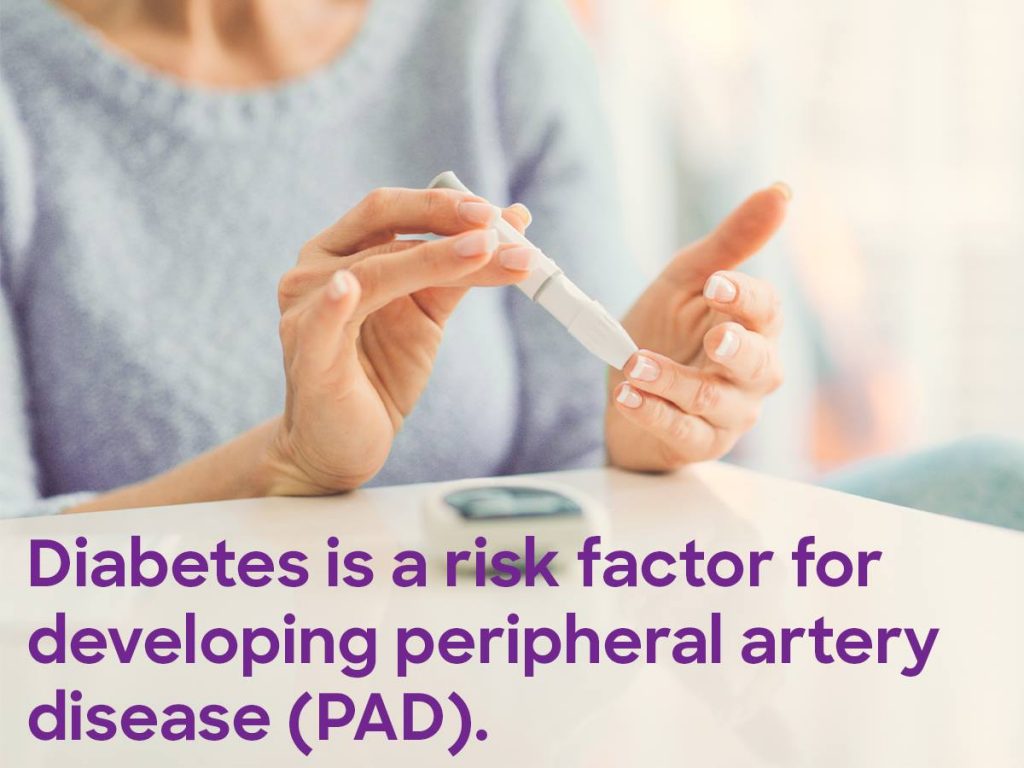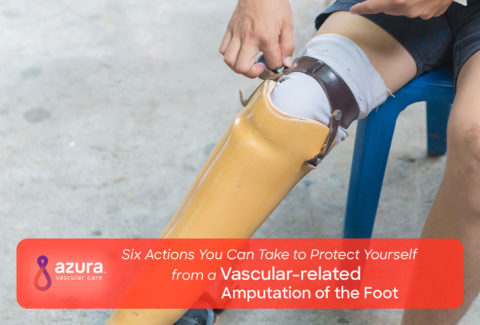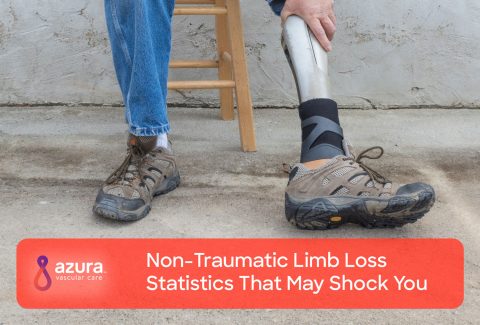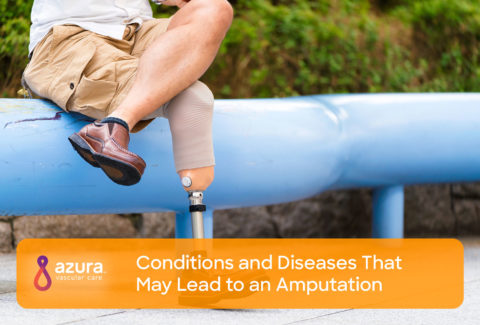
Amputation is a common complication of poor circulation that affects more than people in the United States. (i) By understanding current amputation statistics, you’ll be more aware of steps you can take to avoid non-traumatic limb loss.
8 Essential Non-Traumatic Amputation Statistics and Facts
- People requiring amputation due to poor circulation from conditions like peripheral artery disease (PAD) or diabetes account for most non-traumatic amputations. (i)
- Those with diabetes have a 10 times higher risk of amputation compared to those without diabetes. (i)
- Amputation due to poor vascular health accounts for 82 percent of amputations in the United States. (ii)
- The risk of readmission to the hospital after a minor amputation increases if you have chronic diseases such as PAD, hypertension, kidney failure, or previous leg bypass surgery. (iii)
- About 22 percent of people with foot ulcers experience an amputation within 19 years of being diagnosed with type 2 diabetes. (iv)
- It is estimated that 14 to 25 percent of people with a non-healing foot ulcer will need an amputation. (v)
- The risk of undergoing an amputation increases eight times once a person develops a non-healing foot ulcer. (v)
- Approximately 20 percent of people with the most severe form of PAD will undergo an amputation due to PAD within a year of diagnosis. (vi)
Although these statistics appear alarming, you shouldn’t be discouraged. These facts highlight the importance of seeking medical attention if you have a condition like diabetes or PAD.
Understanding the Risk Factors for PAD and Amputation
If you have PAD, your risk for having an amputation does increase. PAD, alone or in combination with diabetes, contributes to more than one-half of all amputations. (vii)
PAD risk factors include:
- Being 50 years of age or older
- Having diabetes
- Being obese
- Being physically inactive
- Smoking
- Having high cholesterol
- Having high blood pressure
Additionally, having a non-healing foot ulcer, a sign of poor circulation, can increase your risk of amputation. (iv, viii)
Several chronic diseases, including diabetes, high blood pressure, kidney disease, and high cholesterol, can increase your risk of amputation if you have PAD. In fact, among those who underwent amputation due to PAD in a recent study, 83 percent had high blood pressure, 63 percent had diabetes, 51 percent had high cholesterol, and 35 percent had kidney failure. (ix)
Reducing the Number of Non-Traumatic Amputations
The first step in reducing the number of PAD-related amputations is increased awareness. Understanding your risk for PAD is important so you can take steps to improve your health and decrease your risk of developing this progressive disease leading to amputation. Talk to your doctor about early interventions and treatment of non-healing foot ulcers. He or she may recommend a screening exam to confirm or rule out PAD. And, while PAD isn’t curable, we have the technology and capability to treat the disease to prevent its progression. Delays in treatment may increase your chance of needing an invasive surgical procedure. Waiting too long can lead to complications and may leave amputation as the only treatment option.
Have questions about PAD? Download our FREE information sheet about understanding peripheral artery disease.
Ask your doctor about less invasive procedures such as stenting, angioplasty, and atherectomy. Call 844-LEG-DOCS (534-3627) to schedule an appointment with a vascular specialist, learn more about your risk for PAD and amputation, or discuss your treatment options.
Sources:
i Varma P, Stineman MG, Dillingham TR. Physical Medicine and Rehabilitation Clinics of North America Epidemiology of Limb Loss. Physical medicine and rehabilitation clinics of North America. 2014;25(1):1-8. doi:10.1016/j.pmr.2013.09.001.
ii Sauter CN, Pezzin LE, Dillingham TR. Functional Outcomes of Persons Undergoing Dysvascular Lower Extremity Amputations: Effect of a Post-Acute Rehabilitation Setting. American journal of physical medicine & rehabilitation / Association of Academic Physiatrists. 2013;92(4):287-296. doi:10.1097/PHM.0b013e31827d620d.
iii Beaulieu, R. J., Grimm, J. C., Lyu, H., Abularrage, C. J., & Perler, B. A. (2015). Rates and predictors of readmission after lower extremity amputations. Journal of Vascular Surgery, 62(1), 101-105.
iv Bruun, C., Siersma, V., Guassora, A. D., Holstein, P., & de Fine Olivarius, H. (2013). Amputations and foot ulcers in patients newly diagnosed with Type 2 diabetes mellitus and observed for 19 years: The role of age, gender and co-morbidity. Diabetes Medicine 30(8), 964-972.
v Setacci, C., de Donato, G., Setacci, F., & Chisci, E. (2009). Diabetic patient: Epidemiology and global impact. Journal of Cardiovascular Surgery, 50(3), 263-273.
vi Swaminathan, A., Vemulapalli, S., Patel, M.R., & Jones, W.S. (2015). Lower extremity amputation in the peripheral artery disease: Improving patient outcomes. _World Journal of Diabetes,_6(1), 37-53. Retrieved from https://www.ncbi.nlm.nih.gov/pmc/articles/PMC4107174/on 4/30/18).
vii Kalapatapu, V., MD. (2018, April 23). Lower extremity amputation. Retrieved May 11, 2018, from https://www.uptodate.com/contents/lower-extremity-amputation?source=history_widget#H614727892.
viii Pickwell, K., Siersma, V., Kars, M., Apelqvist, J., Bakker, K., Edmonds, M., & Schapen, N. (2015). Predictors of lower-extremity amputation in patients with an infected diabetic foot ulcer. Diabetes Care,38(5),852-857.
ix Shah, S. K., Bena, J. E., Allemang, M. T., Kelso, R., Clair, D. G., Vargas, L., & Kashyap, V. S. (2013). Lower extremity amputations: Factors associated with mortality or contralateral amputations. Vascular and endovascular Surgery, 47(8), 608-613.


